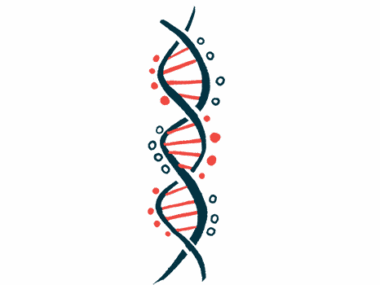Personalized gene therapy benefits twins with juvenile Batten disease
Girls saw gains in function, which surpassed expectations of researchers
Written by |

A personalized treatment called Zebronkysen led to gains in function for twin girls with juvenile Batten disease in a clinical study, surpassing the expectations of researchers who had hoped merely to slow disease progression.
“We did not expect to see improvement in addition to a slowing of decline,” Yael Shiloh-Malawsky, MD, a professor at the University of North Carolina who is leading the clinical study, said in a university news story. “Seeing improvements is more than we hoped for.”
Juvenile Batten disease is caused by mutations in the CLN3 gene. The two girls, Amelia and Makenzie Kahn, both carry the same mutation. Zebronkysen is a genetic medicine, called an antisense oligonucleotide, that was specifically designed to restore the functionality of the gene with their specific mutation.
The study testing Zebronkysen in these two girls is part of a growing trend of so-called n-of-1 studies, where an experimental therapy is designed to treat one specific person’s disease. Since there are two girls in this case, it’s an n-of-2 study.
“Our hypothesis was that restoring CLN3 protein function would stabilize this neurodegenerative disorder and prevent further decline,” Shiloh-Malawsky said.
Twins see multiple benefits from personalized gene therapy
Prior to receiving the experimental treatment, Makenzie had been experiencing severe dystonia, or involuntary muscle contractions, and she wasn’t able to get out of bed or rise from the floor without assistance. After starting on Zebronkysen, however, her dystonia has eased and she is able to get out of bed by herself. Her walking and energy also have improved.
“Before the trial started, one of the protocols in collecting data was to measure Makenzie’s steps as she walked for two minutes without help,” Shiloh-Malawsky said. “Before the start of the drug, she walked 22 yards and did not walk the full two minutes. Six months after receiving the treatment, she walked 48 yards.”
“Makenzie used to nap a lot and be sleepy. Now, she’s more alert and awake,” said Karen Kahn, Amelia and Makenzie’s mom.
The experimental therapy also has led to improvements for Amelia. Following the treatment, she was able to do some eating and drinking by mouth, which she hadn’t been able to do for the last two years. Her mood and energy also have improved, according to her parents.
“Before the treatment, Amelia experienced sensory overload with Batten. Now she tolerates noise in a restaurant and is happy. She wakes up in the morning and smiles at me,” said Karen Kahn, who also noted that there’s been a decrease in Amelia’s need for on-demand medications to manage pain, muscle spasms, and anxiety.
Girls haven’t experienced substantial disease worsening on Zebronkysen
In addition to these improvements, both girls have not experienced substantial disease worsening while on Zebronkysen.
“We haven’t had any more loss of abilities while being on the drug over the last year. That speaks to the stabilization of the decline of the disease,” said David Kahn, Amelia and Makenzie’s father, who added that the therapy “looks very promising in our eyes.”
The Kahn sisters began receiving Zebronkysen treatment in June 2024. The therapy is being given intrathecally, or by injection into the spinal canal, every three months. It was started at a dose of 15 mg per injection, but has been increased to 45 mg per injection in the years since starting treatment.
“After four doses, 12 months from the first dose in June 2024, we have seen an impact that is more positive than what we expected on multiple domains,” Shiloh-Malawsky said.
David Kahn noted that the girls’ increases in functionality “didn’t last the complete three months between treatments, but there was the spike and plateau of benefits that we were very welcomed to see.”
The unexpectedly positive findings from this study emphasize the importance of developing other interventions that can be more broadly applied to help people with Batten disease, according to Shiloh-Malawsky.
“Seeing the beneficial results from this trial puts an emphasis on the urgent need to develop similar interventions for people with other mutations in this gene of Batten disease,” she said.







